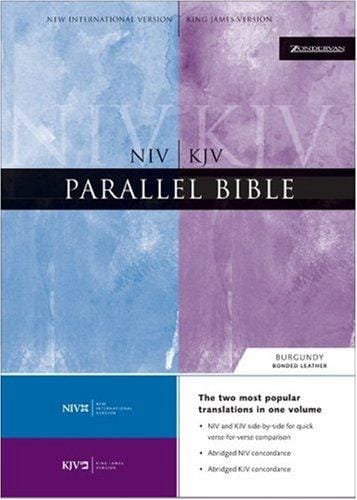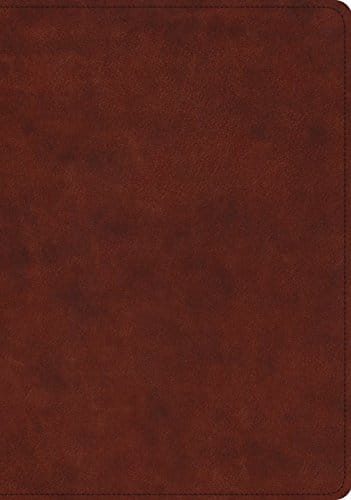NIV Holy Bible: Features, History, and Why It Remains Popular
Discover the history, translation philosophy, key features, and practical tips for choosing the right edition of the NIV Holy Bible.

Introduction: A Trusted Modern Translation
The New International Version, commonly known as the NIV Holy Bible, has become one of the world’s most widely read and trusted English Bible translations since its full release in 1978. Combining clarity, accuracy, and readability, the NIV aims to bridge the gap between strict word-for-word translations and more dynamic, thought-for-thought versions. Whether you are a lifelong believer, a new Christian, or simply curious about biblical literature, understanding what makes the NIV unique will help you decide if it is the right Bible for your personal study, devotion, or gifting.
The Origins and History of the NIV
The vision for the NIV began in the mid-1960s when a group of evangelical scholars recognized the need for a fresh, contemporary translation that preserved biblical accuracy while speaking naturally to modern English speakers. Sponsored by the New York Bible Society (now Biblica), the translation committee included over one hundred linguists, theologians, and literary experts from various denominations. The New Testament first appeared in 1973, followed by the complete Bible in 1978. A thoroughly reviewed and lightly updated edition was released in 1984, and the most recent comprehensive revision was published in 2011, reflecting advances in biblical scholarship and changes in everyday English usage.
Translation Philosophy: Balance Between Accuracy and Readability
NIV translators follow a philosophy called "optimal equivalence." This approach seeks to convey the meaning of the original Hebrew, Aramaic, and Greek texts while maintaining natural English syntax and diction. In passages where a literal, word-for-word rendering clearly communicates the intent of the ancient authors, the NIV closely mirrors the source languages. When a strictly literal translation would obscure meaning or sound awkward, the translators choose equivalent contemporary expressions. The result is a text that retains theological integrity yet flows smoothly for public reading, private devotion, and in-depth study.
Key Features That Set the NIV Apart
Beyond its translation philosophy, the NIV Holy Bible offers a range of built-in aids that enrich engagement with Scripture. Most editions include sectional headings that summarize themes, making it easier to locate passages and follow narrative developments. Footnotes supply alternative translations, textual-critical information, and explanations of ancient weights, measures, or idioms. Many study editions add book introductions, maps, concordances, and cross-references that guide readers through complex historical and theological contexts. Additionally, the NIV has wide support from publishers, resulting in diverse formats such as large-print, journaling, thin-line, and premium leather editions.
Readability for All Ages and Backgrounds
Perhaps the NIV’s greatest strength is its accessibility. Written at roughly a seventh-grade reading level, the translation uses familiar vocabulary and clear sentence structure without oversimplifying the nuanced meanings of the biblical texts. This balance makes the NIV suitable for congregational readings, youth ministries, and individual study alike. Because of its fluid style, listeners can easily understand passages when read aloud, and readers who speak English as a second language often find the NIV less intimidating than older, more archaic translations.
Benefits of Choosing the NIV Holy Bible
1. Doctrinal Reliability: Overseen by a diverse, evangelical committee, the NIV adheres to high scholarly standards, ensuring that key theological concepts remain intact. 2. Ecumenical Acceptance: Because it avoids denominational bias, the NIV is used in countless churches across the globe, facilitating shared worship experiences. 3. Study Resources: Publishers offer comprehensive study Bibles—such as the NIV Study Bible, the NIV Cultural Backgrounds Study Bible, and the NIV Life Application Study Bible—that provide notes, articles, and visuals tailored to various learning styles. 4. Versatility: From pocket-size New Testaments to audio, digital, and large-print formats, the NIV fits virtually any lifestyle or ministry need.
NIV vs. Other Popular English Translations
When selecting a Bible, it helps to compare translation philosophies. The English Standard Version (ESV) leans more literal, favoring word-for-word fidelity that can occasionally feel wooden. The New Living Translation (NLT) prioritizes a thought-for-thought approach, delivering accessible prose at the expense of some nuanced detail. The King James Version (KJV) remains beloved for its majestic cadence but contains archaic language that challenges modern readers. The NIV positions itself at the center of the spectrum, offering a blend of precision and readability. This middle path explains much of its widespread adoption among pastors, scholars, and lay readers.
How to Choose the Right NIV Edition
First, identify your primary purpose: daily reading, in-depth study, church presentation, or creative journaling. For serious study, consider an edition with extensive footnotes, maps, and commentary. If portability matters, a thin-line or compact edition is ideal. Artists and journalers may prefer wide-margin or interleaved versions. Second, examine binding and paper quality—genuine leather and smyth-sewn bindings last longer but cost more, while paperback can be budget-friendly for group outreach. Third, test print size; large-print editions reduce eye strain for prolonged reading sessions. Finally, explore special-interest editions, such as the NIV Chronological Bible or the NIV Adventure Bible for kids, which organize content uniquely to enhance engagement.
Digital and Audio Versions for the Modern Reader
The rise of smartphones and e-readers has expanded access to the NIV Holy Bible. Popular apps like YouVersion, Olive Tree, and Logos offer free or premium NIV texts, synchronized across devices. Digital editions enable keyword searches, instant cross-references, and note-taking, making deep study both efficient and portable. Audio Bibles, narrated by award-winning voice actors, allow commuters or visually impaired readers to consume Scripture hands-free. Many services even provide dramatized recordings with music and sound effects that bring narratives to life. With offline downloads and adjustable playback speeds, the NIV remains relevant in an increasingly mobile society.
Who Can Benefit Most from the NIV?
Students desiring clear language for Bible classes, pastors seeking an accessible translation for mixed-age congregations, and families conducting devotionals will all appreciate the NIV’s stylistic balance. New believers often find its conversational tone less daunting, while seasoned scholars value its accuracy. Because the NIV is available worldwide, missionaries and global churches can distribute consistent study materials, fostering unity across cultural and linguistic boundaries.
Conclusion: A Bible for Today and Tomorrow
For over four decades, the NIV Holy Bible has successfully communicated God’s Word to millions through its harmonious blend of accuracy and readability. Ongoing revisions, expansive study resources, and innovative digital formats ensure the NIV continues to meet the evolving needs of Christians around the world. Whether you seek a personal reading Bible, an in-depth study companion, or a gift that encourages spiritual growth, the NIV offers a trustworthy and engaging option that stands the test of time.

